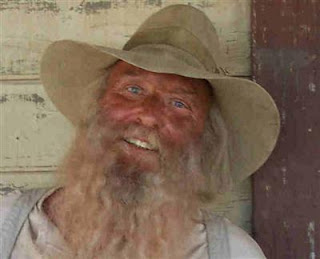
Alarums, Alarums, To Arms, To Arms!
7 years ago
"God is a comedian
playing to an audience
that is too terrified to laugh."--Voltaire
 Could you have a Neanderthal in your family tree? Scientists say modern humans did more than simply coexist with our evolutionary cousins. New research shows that Neanderthals and non-African early humans had sex — and produced offspring. Genetic evidence suggests that early "humans" (Cro-Magnon folk) interbred with the Neanderthalers.
Could you have a Neanderthal in your family tree? Scientists say modern humans did more than simply coexist with our evolutionary cousins. New research shows that Neanderthals and non-African early humans had sex — and produced offspring. Genetic evidence suggests that early "humans" (Cro-Magnon folk) interbred with the Neanderthalers. There's more.
Be careful whom you call a Neanderthal. You may be one yourself. Or at least you may have Neanderthal ancestors.
That's the conclusion of a study being released Thursday that examined DNA extracted from Neanderthal bones more than 35,000 years old.
More Than A Handshake?
There's little question that modern humans and Neanderthals bumped into each other once upon a time.
"The archaeological record shows they overlapped between about 30,000 and 80,000 years ago," says David Reich, a geneticist at Harvard Medical School.
There was some fossil evidence that they may have done more than shake hands in passing, but the initial genetic evidence suggested otherwise.
"And so the big open question was whether they exchanged genes during that time when they overlapped in the Middle East and in Europe," he says.
To find out whether the two human species interbred, scientists from the Max Planck Institute for Evolutionary Anthropology in Leipzig, Germany, launched an audacious effort to sequence all 3 billion letters of Neanderthal DNA. As hard as it may be to believe, fragments of DNA can survive in bones that are more than 30,000 years old. New techniques can sequence those fragments, and new software can line the fragments up.
The main strategy for finding whether modern humans and Neanderthals exchanged genes was to compare the Neanderthal DNA with DNA from modern humans — some whose ancestors had remained in Africa, and others who had migrated to Europe, Asia and the New World. If the Neanderthal DNA was more similar to the non-African DNA, it would indicate that Neanderthals contributed their genes after the first modern humans migrated out of Africa.
Reich says that's what they found.
"The non-African is more closely related to the Neanderthal," Reich says. "Quite definitely. Highly statistically significantly overwhelming evidence that they're more closely related on average to Neanderthals."
In other words, Reich and his Leipzig co-authors are totally sure that Neanderthal genes found their way into modern humans when the two species intersected. They report their findings in the journal Science.
"The simplest possible explanation is that it occurred once," Reich says. "But it very easily could have occurred on multiple occasions. Perhaps it's likely that it occurred on multiple occasions."
Reich says it's hard to pin down exactly how much DNA Neanderthals contributed to modern humans. Reich says it's hard to pin down exactly how much DNA Neanderthals contributed to modern humans. "We estimate about 1 to 4 percent of the genetic ancestry of non-Africans is from Neanderthals," he says.
